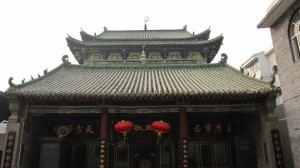ENG
Mosques In China
Luoyang
Sanya West Mosque
Address: Huixin Village, Sanya
Sanya West Mosque is located at Huixin Village. The West Mosque was built in 1473 in the Ming Dynasty in traditional Chinese architecture. The beams of the prayer hall are decorated with two exquisite sleeping dragons.
Windows of the West Mosque are decorated with beautiful patterns of flower, grass, birds, fish and shrimps. Sanya West Mosque was destroyed during the Culture Revolution and rebuilt in 1978. The prayer hall of Sanya West Mosque covers a floor space of over 300 square meters which can accommodate over 400 people to pray at the same time.
Windows of the West Mosque are decorated with beautiful patterns of flower, grass, birds, fish and shrimps. Sanya West Mosque was destroyed during the Culture Revolution and rebuilt in 1978. The prayer hall of Sanya West Mosque covers a floor space of over 300 square meters which can accommodate over 400 people to pray at the same time.
Sanya South Mosque
Address: Huihui Village, Sanya
The largest and best known is the Sanya South Mosque. Having been renovated several times over the last thousand years, it is a place where Muslims can meet for daily prayers. Its architecture is a mix of classic Arabic and traditional Chinese.
Sanya Ancient Mosque
Address: Huihui Village, Sanya
Sanya Ancient Mosque is the earliest mosque in Sanya which has a history of over 700 years. Sanya Ancient Mosque was once destroyed during the culture revolution (1966-1976) and rebuilt on the original site in 1986 with the donation from local Muslims. Sanya Islamic Association is located at this mosque.
Shanghai Female Mosque
Address: No. 24, Xiaotaoyuan Street, Huangpu District, Shanghai
The Shanghai Female Mosque is located next to Xiaotaoyuan Mosque, it was built in the year of 1933 and closed during the second world war because Japanese invasion and occupation of Shanghai. The current mosque is in Arabic Style three story building, and covers an area of 600 square meter, also the nearest renovation was on 2010 because of the World Expo in Shanghai.
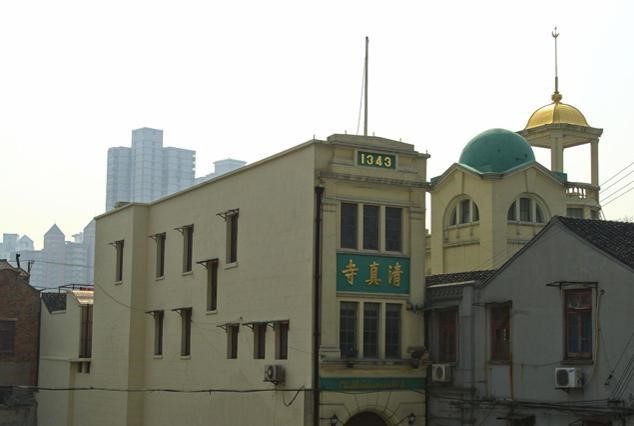
Shanghai Huxi Mosque
Address: No,3, Changde Road, Putuo District, Shanghai
Huxi Mosque was originally constructed at Xikang Road in 1914-1921 and completed in 1922 under the name Yaoshuinong Mosque. In 1935, the mosque underwent renovation and was expanded to be able to accommodate 200 worshipers. The mosque resumed its religious activities in 1979.
In April 1994, the mosque was moved to Changde Road. The mosque covers an area of 1,667 m2. The mosque consists of two-floor prayer hall. It is built with double arches and a fan-shaped roof. It also houses a teaching room, imam room, guesthouse and a bathhouse. It also features a butcher shop and a shop. The mosque consists of one minaret with a height of 25 meters and 6 domes.
In April 1994, the mosque was moved to Changde Road. The mosque covers an area of 1,667 m2. The mosque consists of two-floor prayer hall. It is built with double arches and a fan-shaped roof. It also houses a teaching room, imam room, guesthouse and a bathhouse. It also features a butcher shop and a shop. The mosque consists of one minaret with a height of 25 meters and 6 domes.
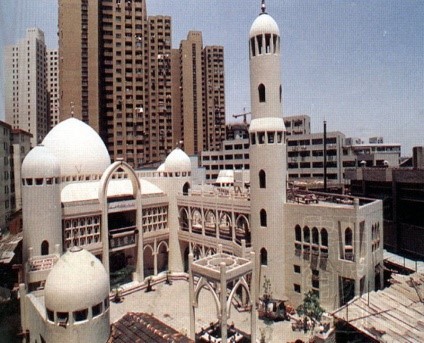
Shanghai Pudong Mosque
Address: No. 375, Yuanshen Road, Pudong New District, Shanghai
Pudong mosque was originally constructed in 1935 at No. 16 Wujiating, Pudong Avenue. It underwent expansion in 1984 due to its small size. In 1995, the mosque was rebuilt at its present location with the support and funding from Pudong District government. The mosque covers an area of 1,650 m2 which includes a courtyard, prayer hall, imam room, ablution room and office. The building has light-colored exterior with green dome. The main building consists of three floors built with Arabic style of architecture. It has a 40-meter high minaret and three smaller domes. The mosque also features shop selling books, religious materials and food.
The main prayer room can accommodate 500 worshipers with additional prayer room at the back to be opened during Friday prayer that can accommodate 300 worshiper and the female prayer room section that can accommodate 50 worshipers.
The main prayer room can accommodate 500 worshipers with additional prayer room at the back to be opened during Friday prayer that can accommodate 300 worshiper and the female prayer room section that can accommodate 50 worshipers.
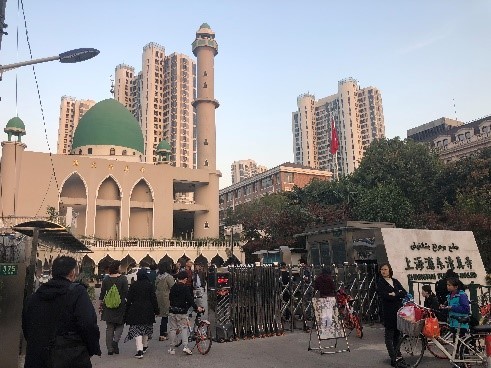
Shanghai Songjiang Mosque
Address: No. 21 Gangbeng Xiang, Songjiang District, Shanghai
The Songjiang Mosque, formerly called the Real Religion Mosque. It is the oldest mosque in Shanghai. The mosque was originally constructed during the Toghon Temür reign of Yuan Dynasty. It was rebuilt in 1391 and expanded three times during the Ming Dynasty. The mosque then went through four renovations during the Qing Dynasty. On 26 August 1908, the Shanghai municipal government listed the mosque as a cultural heritage.
The mosque underwent renovation again in 1985. The mosque covers an area of 4,900 m2. It was constructed in traditional Hui Muslim Chinese palace architecture with Arabic calligraphy. The mosque consists of the mail hall, prayer niche, corridor, two sermon halls and a bathroom. In the east of the mosque lies the Bunker Gate Tower for Muslims to do prayer. The prayer hall is located in the opposite of the tower in the west of the mosque. It is divided into the front and the back hall, with characteristics of Ming and Yuan architecture respectively.
The mosque underwent renovation again in 1985. The mosque covers an area of 4,900 m2. It was constructed in traditional Hui Muslim Chinese palace architecture with Arabic calligraphy. The mosque consists of the mail hall, prayer niche, corridor, two sermon halls and a bathroom. In the east of the mosque lies the Bunker Gate Tower for Muslims to do prayer. The prayer hall is located in the opposite of the tower in the west of the mosque. It is divided into the front and the back hall, with characteristics of Ming and Yuan architecture respectively.
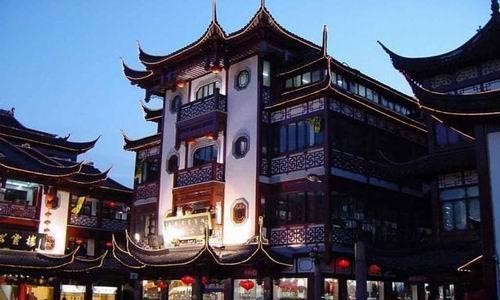
Qingdao Mosque
Address: No. 9, Changzhou Road, Shinan District, Qingdao
The Qingdao Mosque is in a combination of Chinese traditional and Arabic-style architecture style. The mosque is a two-floor building, which covers an area of 4,000 square meters. The Imam’s office, meeting room and class room are set up on the first floor. The second floor is the prayer hall, which is spacious and bright.
The huge crystal lamp is hung on the center of the roof, shining on the whole hall.
For every Jumaat, there will be around 4 to 500 people gather and pray, and during Eid al-Fitr and Id al-Adha festival, the number of people will reach to 5000 to 6000.
The huge crystal lamp is hung on the center of the roof, shining on the whole hall.
For every Jumaat, there will be around 4 to 500 people gather and pray, and during Eid al-Fitr and Id al-Adha festival, the number of people will reach to 5000 to 6000.

Ningbo Yuehu Mosque
Address: No. 18, Houying Lane, Ningbo
The Yuehu Mosque is a mosque in Haishu District, Ningbo City, Zhejiang Province, China. Islam was introduced to China in 651 AD. Hagras in which he recorded "the Muslims traders lived in Ningbo during the Song dynasty.... the mosque was built in 1003 during the era of Song Emperor Xiánpíng (998‐1003) by Muslims traders, and the mosque follows the norms of Chinese wooden structures".
Hamada Hagras in which he reported on the Yuehu Mosque "Muslims traders lived in Ningbo during the Song dynasty, particularly since the year 990 AD during the era of Emperor Chun Hua. Ningbo's commercial importance gradually increased, it flowed into large communities of Muslims Traders; Hence there was an urgent need to build places of worship for them. The Yuehu mosque built in 1003 during the sixth year of the era of northern Song Emperor Xiánpíng (998‐1003) by Muslims traders who had migrated from Arab lands to settle in China. The Ningbo Yuehu mosque is like Chinese mosques that follows essentially the norms of Chinese planning and layout design and wooden structures. The layout of mosques in China defied traditional Chinese planning. However mosques were influenced by another inescapable factor: the orientation of Mecca; all Chinese mosques had to face west, which imposed by Islamic faith; so the direction of Ningbo mosque is East‐west".
Hagras also recorded about the Mosque "It seems that the architecture of Beijing mosques had an impact on Ningbo Mosque; the layout of prayer hall was similar to other of Beijing mosques, such as Madian mosque, Haidian mosque, and Shucun mosque. On the other hand, the layout of the mosque was different from most Chinese mosques; where the entrance isn't located on the middle axes of the mosque plan. The mosque plan contains a multiplicity of courtyards; this layout had been followed in many mosques in China. The roof of the mosque was not affected by those found in the mosques of the Islamic world but followed the models of traditional Chinese ceilings. However architecture of the mosque is considered in its entirety Chinese architecture; where it was relying on items and elements of traditional Chinese architecture, such as wooden structures, courtyards, and the gates of the moon, as well as the Chinese plan, the Chinese and ceilings, but it affected by the Arabic inscriptions that refer to the Islamic religion and belief."
Hamada Hagras in which he reported on the Yuehu Mosque "Muslims traders lived in Ningbo during the Song dynasty, particularly since the year 990 AD during the era of Emperor Chun Hua. Ningbo's commercial importance gradually increased, it flowed into large communities of Muslims Traders; Hence there was an urgent need to build places of worship for them. The Yuehu mosque built in 1003 during the sixth year of the era of northern Song Emperor Xiánpíng (998‐1003) by Muslims traders who had migrated from Arab lands to settle in China. The Ningbo Yuehu mosque is like Chinese mosques that follows essentially the norms of Chinese planning and layout design and wooden structures. The layout of mosques in China defied traditional Chinese planning. However mosques were influenced by another inescapable factor: the orientation of Mecca; all Chinese mosques had to face west, which imposed by Islamic faith; so the direction of Ningbo mosque is East‐west".
Hagras also recorded about the Mosque "It seems that the architecture of Beijing mosques had an impact on Ningbo Mosque; the layout of prayer hall was similar to other of Beijing mosques, such as Madian mosque, Haidian mosque, and Shucun mosque. On the other hand, the layout of the mosque was different from most Chinese mosques; where the entrance isn't located on the middle axes of the mosque plan. The mosque plan contains a multiplicity of courtyards; this layout had been followed in many mosques in China. The roof of the mosque was not affected by those found in the mosques of the Islamic world but followed the models of traditional Chinese ceilings. However architecture of the mosque is considered in its entirety Chinese architecture; where it was relying on items and elements of traditional Chinese architecture, such as wooden structures, courtyards, and the gates of the moon, as well as the Chinese plan, the Chinese and ceilings, but it affected by the Arabic inscriptions that refer to the Islamic religion and belief."
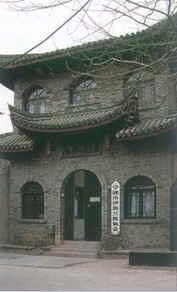
Nanning Mosque
Address: No. 25, Xinhua Street, Nanning
Nanning Mosque was originally built in 1707 during the reign of the Qing Dynasty Kangxi Emperor and was rebuilt in 1804 under the Jiaqing Emperor. The mosque is a three-story building which covers an area of 1,890 m2 which can accommodate around 100 people.
It has Arabic style with conical roof and arch-style doors and windows. The first floor is used for restaurant area. The second floor is used for meeting room, office room and dormitory room. The third floor is the prayer hall.
It has Arabic style with conical roof and arch-style doors and windows. The first floor is used for restaurant area. The second floor is used for meeting room, office room and dormitory room. The third floor is the prayer hall.
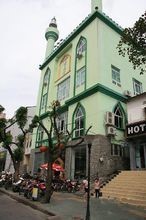
Nangchang Mosque
Address: No. 15, Cuxiang, Xihu District, Nanchang
Nanchang Cuxiang Mosque was first built in the 4th year(1824) of Daoguang, Qing Dynasty(1644-1911). The temple, covering an area of more than 400 square meters, is located in the south and opposite to the north.
The temple is divided into two two-floor builidings: the front building and the back building. Between the two buildings is a yard. The first floor of the front building is the water room and the second floor is the office room. The meeting room, teaching room, iama house, and guest house are in the first floor of the back building. The second floor is the prayer hall, covering an area of 100 square meters, which can hold 200 people to do prayer.
The Cuxiang Mosque has become the religious center for Muslim people and is the headquarter of the Islamic Association in Jiangxi Province.
The temple is divided into two two-floor builidings: the front building and the back building. Between the two buildings is a yard. The first floor of the front building is the water room and the second floor is the office room. The meeting room, teaching room, iama house, and guest house are in the first floor of the back building. The second floor is the prayer hall, covering an area of 100 square meters, which can hold 200 people to do prayer.
The Cuxiang Mosque has become the religious center for Muslim people and is the headquarter of the Islamic Association in Jiangxi Province.
Nanjing Caoqiao Mosque
Address: No. 26-32, Ganyu Xiang, Qinhuai District, Nanjing
Caoqiao Mosque was originally constructed during the Qianlong Emperor rule of Qing Dynasty. Since then, the mosque has been reconstructed and removed several times. The mosque was built with traditional Chinese architecture style. It consists of main prayer hall, teaching room, ablution room and wing room.
Nanjing Hanximen Mosque
Address: No. 13, Libaisixiang, Hanximen, Tangzijie, Nanjing
The Hanximen Mosque was built in Ming Dynasty(1368-1644) and was rebuilt in the Qing Dynasty(1644-1911). The current mosque was rebuilt in the year of 1915. And the major constructions include the prayer hall, moon building, water house, classroom, and dormitory.
The main hall covers an area of 320 square meters and is 8 meters high. It is a Chinese traditional building with Arabic style of windows and doors.
Nanjing Jizhaoying Mosque
Address: No. 43, Jizhaoying, Xuanwu District, Nanjing
Jizhaoying Mosque complex covers an area of 815.1 m2. It has a total of 4 floors which consists of guardroom, kitchen, meeting hall, restroom, main prayer hall, shower room, ablution room, reception room, imam's office, meeting room and the mosque staffs office.
The prayer hall of the mosque was rebuilt in 1912. In 1987, the mosque underwent renovation with funds raised by the Urban Islamic Association in Nanjing.
Hushu Mosque
Address: No.39 Shuibei Street, Hushu Town, Jiangning District, Nanjing
Hushu Mosque was built in the year of 1392, Ming Dynasty, then repaired in the year of 1896, Qing Dynasty. In 1910, mosque has the chance to expand then they dig out a new well, built five more rooms including dormitory, water room and meeting room.
Around 1932, mosque established Muslim elementary school and then in 1956, school was moved. In the year of 1964, the prayer hall was demolished due to lack of maintain, then rebuilt in 1979.
Around 1932, mosque established Muslim elementary school and then in 1956, school was moved. In the year of 1964, the prayer hall was demolished due to lack of maintain, then rebuilt in 1979.
Yitiaoxiang Mosque
Address: No.9 Yitiao Lane, Zhujiang Town, Pukou District, Nanjing
Yitiaoxiang Mosque is in the center of Zhujiang Town in Pukou district, Nanjing City, Jiangsu Province. The mosque is named after the lane where it is located. Covering an area of 160 square meters, Yitiaoxiang Mosque was originally built before 1929. The mosque was consisted of the main building of prayer halls, bathroom, kitchen, funeral room and a well.
By the time it was returned to the Pukou District Islamic Association in 2001, the mosque was in very poor condition. Repairs and reconstruction work ultimately got underway 7 years after that. Today Yitiaoxiang Mosque is restored and much expanded, making great contribution to the local Muslim community.
By the time it was returned to the Pukou District Islamic Association in 2001, the mosque was in very poor condition. Repairs and reconstruction work ultimately got underway 7 years after that. Today Yitiaoxiang Mosque is restored and much expanded, making great contribution to the local Muslim community.
Nanjing Jingjue Mosque
Address: No. 28, Shengzhou Road, Qinhuai District, Nanjing
Jinjue Mosque was constructed under the order of Hongwu Emperor of Ming Dynasty in 1388. The construction of the mosque was completed in 1392. During the Xuande Emperor rule, Zheng He appealed for the mosque to undergo renovation and the first significant repairs took place in 1430. Further expansion and repairs were commissioned by the Jiajing Emperor in the mid-sixteenth century. Other repairs occurred in 1492, 1877, 1879, 1957, 1982, 1984, and 2002. By the late 19th century, the mosque was reduced from being originally 264 acres to a mere 1650 square meters in consequence of the Taiping Rebellion and to reduce the taxes owed by the mosque.
The current structure was constructed in the late Qing Dynasty and its area has been reduced to 0.4 hectares. In 2007, the mosque underwent reparation and renovation with the support of Nanjing municipal government. In 2014, the government added the adjacent primary school into the mosque area, thus doubling its area. Jinjue Mosque is elaborately styled in a Sino-Islamic fashion. The three-entry gate has a imitation imperial tablet in the top center that reads "bestowed by imperial order" and below that it reads "Jingjuesi" (the name of the mosque). The mosque has several courtyards, a reception room, a ablutions chamber, a antechamber, guest quarters, a prayer hall, a kitchen, and a mihrab located at the western end of the mosque.
The current structure was constructed in the late Qing Dynasty and its area has been reduced to 0.4 hectares. In 2007, the mosque underwent reparation and renovation with the support of Nanjing municipal government. In 2014, the government added the adjacent primary school into the mosque area, thus doubling its area. Jinjue Mosque is elaborately styled in a Sino-Islamic fashion. The three-entry gate has a imitation imperial tablet in the top center that reads "bestowed by imperial order" and below that it reads "Jingjuesi" (the name of the mosque). The mosque has several courtyards, a reception room, a ablutions chamber, a antechamber, guest quarters, a prayer hall, a kitchen, and a mihrab located at the western end of the mosque.
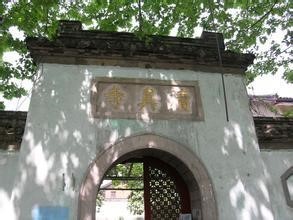
Luoyang Xigong Mosque
Address: Xigong district,Luoyang
Luoyang Xigong Mosque is behind the Luoyang department store, the mosque is in Arab architectural style. It cover an area of one acre, the construction area is 1,600 square meters. Currently, the mosque has four floors, 26 rooms in total including wudu area, classrooms, etc.
The first floor covers an area of 330 square meters. The second floor has five rooms and cover an area of 260 square meters. The third and fourth floor each cover an area of 260 square meters.The female prayer hall is near the entrance of the mosque. The male prayer hall is on the west of the mosque.
The first floor covers an area of 330 square meters. The second floor has five rooms and cover an area of 260 square meters. The third and fourth floor each cover an area of 260 square meters.The female prayer hall is near the entrance of the mosque. The male prayer hall is on the west of the mosque.
Luoyang Beiyao Mosque
Address: NO.4,Jin family street,Luoyang
Beiyao Mosque was built in the year of 1915 and the land was donated Ma Pengfei, Ma Juncai, Ban Yuzhen and Ma Chenglin, etc. After PRC was established, the mosque also changed to many other purposes until 1978.
Luoyang Xinjie Mosque
Address: No. 406, Xinjie, Luoyang
Xinjie Mosque was built in Mid-Ming Dynasty, and was destroyed by flood in Qing dynasty, then local Muslims rebuilt it and also expanded the size. Xinjie Mosque is the oldest mosque in Luoyang City and it has over 400 years old history.
